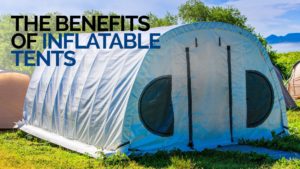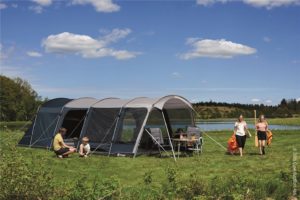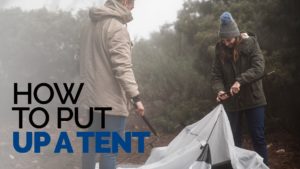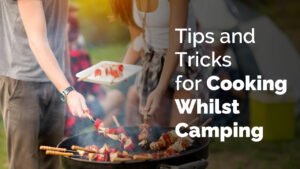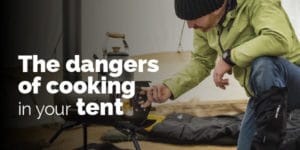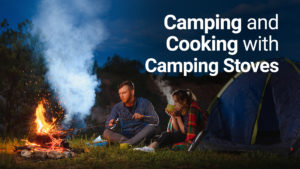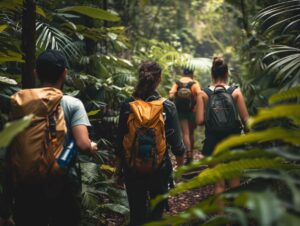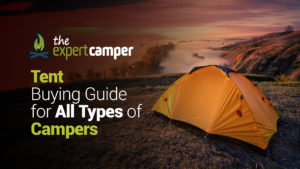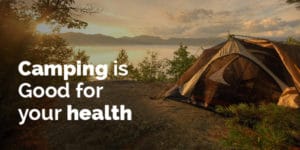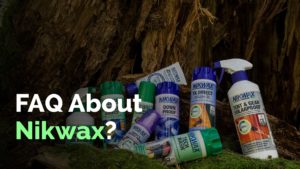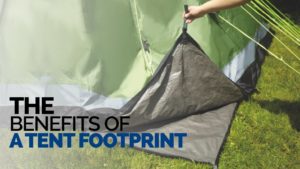
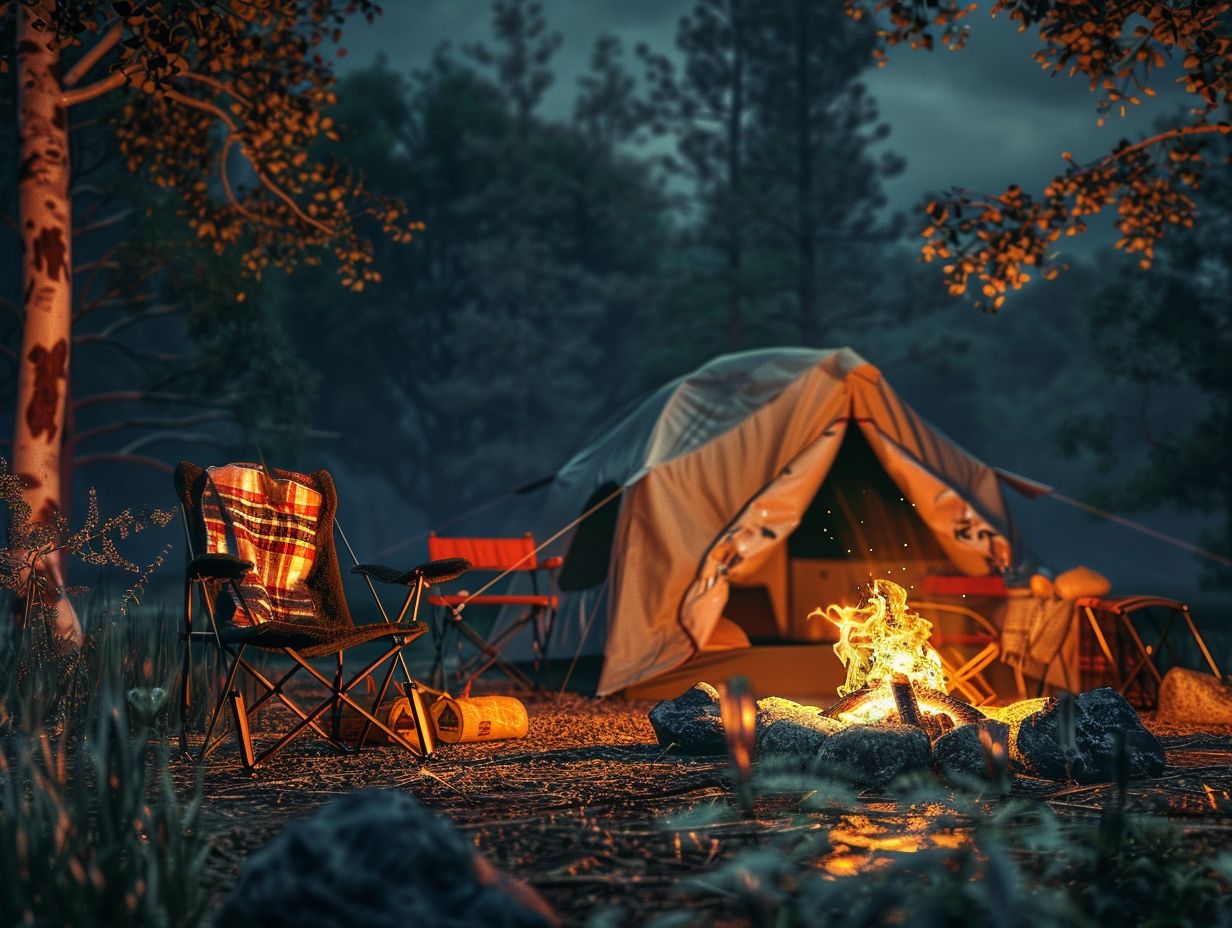
Vaibhav
- Categories: Advice
Are you planning a camping trip and looking to make it as comfortable as possible?
In this article, we will discuss essential gear, tips for setting up a cozy campsite, and how to stay comfortable in different weather conditions.
We will also provide personal comfort tips to ensure you have a relaxing and enjoyable outdoor experience.
Keep reading to learn how to make your camping trip a comfortable and memorable adventure!
Key Takeaways:

- Invest in essential gear such as a tent, sleeping bag, and sleeping pad to ensure a comfortable camping trip.
- Choose the right location, level the ground, and create a cozy seating area to set up a comfortable campsite.
- Prepare for different weather conditions by packing appropriate clothing and gear, such as a portable fan for hot weather or a good pillow for cold weather.
Essential Gear for a Comfortable Camping Trip
Embarking on a camping trip requires thorough preparation and the appropriate equipment to ensure a comfortable experience, whether setting up a tent at a KOA campsite or in a remote wilderness location. Having the right gear can greatly improve the overall camping experience.
1. Tent
The selection of an appropriate tent is paramount for a successful camping expedition, with a variety of options available such as cabin tents, dome tents, A-frame tents, and pop-up tents.
Each type of tent presents distinct advantages aligned with specific camping requirements. Cabin tents are capacious and well-suited for families or groups owing to their vertical walls, which offer generous headroom. Dome tents are favoured for their straightforward assembly, compact dimensions, and resilience in blustery conditions.
A-frame tents, being traditional and robust, are adaptable to diverse terrains and weather situations. Pop-up tents are characterised by swift setup procedures and are particularly suitable for abbreviated trips, making them an excellent choice for novices or individuals seeking convenience.
When contemplating the selection of the most suitable tent for an outdoor expedition, factors such as size, weight, ease of setup, and resistance to inclement weather should be taken into consideration.
2. Sleeping Bag
A high-quality sleeping bag is a crucial element for ensuring warmth and comfort during a camping trip. Options such as The North Face One Bag and Western Mountaineering Cloud 9 Comforter provide a range of temperature ratings and shapes to meet various needs.
When choosing a sleeping bag, the temperature rating should be a key consideration as it indicates the lowest temperature at which the bag can effectively keep the user warm. For example, The North Face One Bag is specifically designed for cold weather camping, boasting a temperature rating of 5°F.
Alongside temperature ratings, the shape of the sleeping bag plays a significant role in the selection process. Mummy-shaped bags like the Western Mountaineering Cloud 9 Comforter offer excellent insulation and warmth retention capabilities.
Moreover, the choice of materials, such as down or synthetic insulation, can affect factors like weight, compressibility, and overall performance. Innovative features, seen in products like the Big Agnes Torchlight UL 30 with expandable panelling for tailored comfort, showcase the advancements in sleeping bag design.
3. Sleeping Pad
A sleeping mat serves the dual purpose of providing insulation and comfort during camping trips, offering a variety of options such as air mats, closed-cell foam mats, and self-inflating mats to enhance the overall camping experience.
Each type of sleeping mat presents distinctive advantages to the camper. Air mats are characterised by their lightweight and packable nature, offering exceptional comfort through the ability to adjust firmness based on individual preferences.
Closed-cell foam mats, on the other hand, are known for their durability and insulation properties, making them particularly suitable for cold weather camping. Self-inflating mats combine the merits of air mats and foam mats, providing a blend of comfort and insulation.
When selecting a sleeping mat, it is advisable to consider key factors such as thickness, R-value for insulation, and weight. By taking these considerations into account, campers can ensure a restful night’s sleep while outdoors.
4. Camp Chairs
Camp chairs are a practical addition to any camping set-up, offering a comfortable seating option for relaxation at the campsite. These chairs are available in a variety of styles, including lightweight backpacking chairs, adjustable recliners, and compact folding chairs, to accommodate the diverse preferences of campers.
Equipped with features like cup holders, side pockets, and built-in cool boxes, camp chairs serve a functional purpose by providing storage for essential items while enjoying the outdoor environment. Constructed with durable materials such as aluminium frames and weather-resistant fabrics, camp chairs ensure stability and durability.
Their ergonomic designs and supportive backrests promote proper posture and comfort during prolonged sitting periods, thereby enhancing the overall camping experience.
5. Portable Hammock
A portable hammock, exemplified by the Kammok Roo Double Hammock, presents a comfortable and leisurely alternative to conventional camping seating and sleeping provisions.
One of the primary advantages of utilising a portable hammock for camping lies in the simplicity of its installation. Typically, with most portable hammocks, including the Kammok Roo Double Hammock, the only requirements are two trees or sturdy anchoring points to efficiently set it up. This obviates the necessity for cumbersome and weighty camping chairs or tents.
Portable hammocks offer exceptional comfort by conforming to the body, thereby furnishing a supportive and ergonomic restful environment amidst the outdoors. Noteworthy is the fact that this mode of relaxation facilitates the enjoyment of the fresh air and picturesque surroundings while ensuring elevation from the frigid or moist ground.
6. Inflatable Mattress
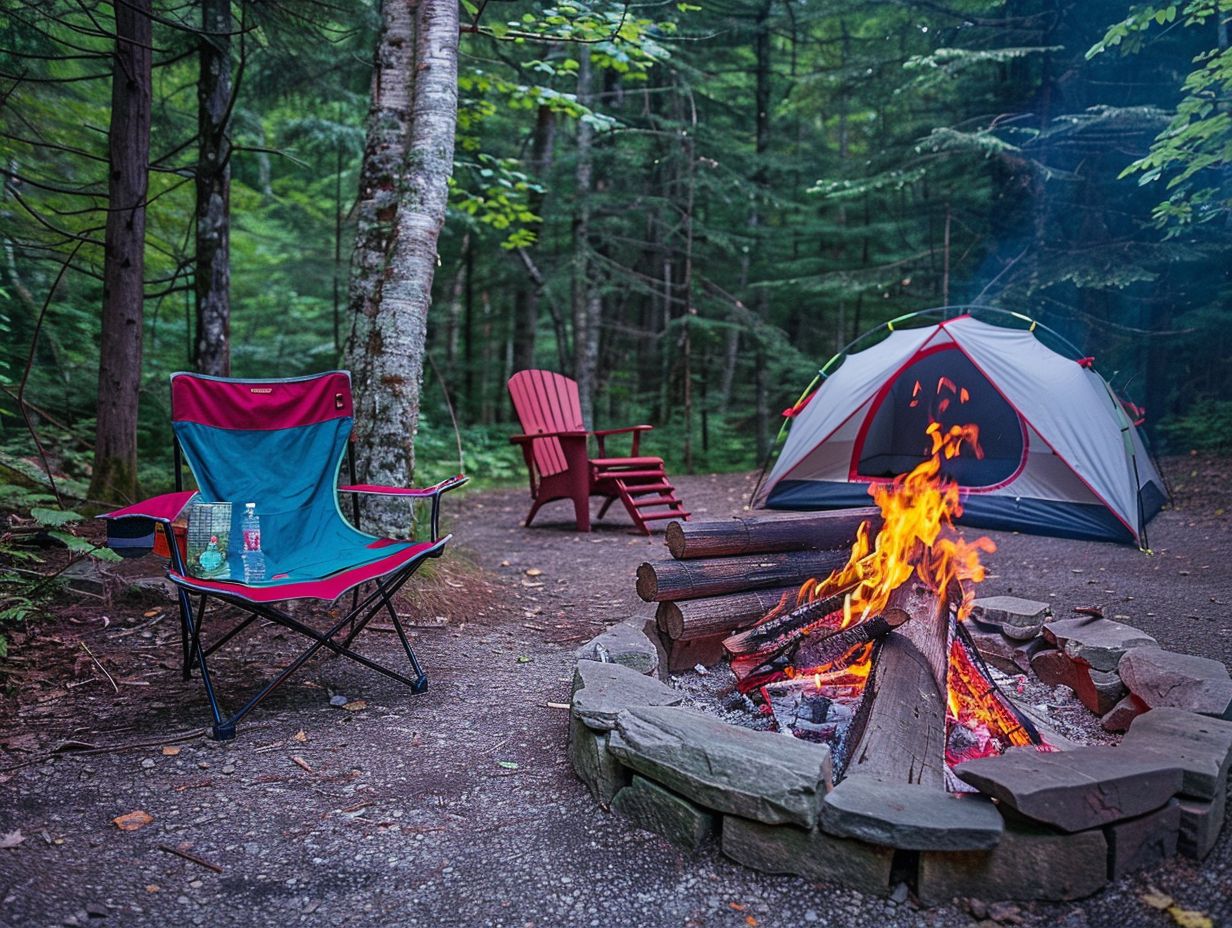
The Alps Mountaineering Velocity Air Bed, an inflatable mattress, can significantly improve sleeping comfort by offering a flat and cushioned sleeping surface. These mattresses present numerous advantages compared to alternative sleeping options like sleeping mats and camping beds.
A key benefit is their ability to provide adjustable firmness levels, enabling users to tailor their sleeping experience to their preferences. Inflatable mattresses are typically more compact and lightweight than traditional camping beds, simplifying transportation and storage. Their quick inflation and deflation process save time and effort during setup and packing.
Consequently, inflatable mattresses are a versatile and convenient choice for camping and outdoor trips.
Tips for Setting Up a Comfortable Campsite
Establishing a comfortable campsite requires meticulous attention to detail in the selection of a suitable location, leveling the ground appropriately, and ensuring that the tent and other equipment are arranged in a manner that optimises comfort.
1. Choose the Right Location
The initial step towards establishing a comfortable campsite involves selecting an appropriate location, taking into account factors such as proximity to water sources, terrain flatness, and the prevailing climate of the camping area.
Moreover, it is imperative to evaluate the direction and intensity of the wind to prevent pitching camp in a location that is consistently exposed to strong gusts.
Identifying a site that offers sufficient shade, particularly in warmer climates, is advisable. Additionally, attention should be paid to the natural surroundings; it is wise to avoid camping directly beneath dead or leaning trees that may present safety risks.
By meticulously assessing these environmental variables in conjunction with individual preferences, one can ensure a memorable and pleasurable camping excursion.
2. Level the Ground
It is imperative to level the surface where the tent will be pitched to ensure a comfortable sleeping area and prevent water accumulation in the event of rain. This process not only establishes a flat foundation for the tent but also aids in proper drainage, mitigating the risk of flooding within the camping enclosure.
Uneven terrain may result in sleep discomfort and unintended movement during the night. Prioritising the levelling of the ground contributes to the establishment of a stable and enjoyable camping setting. An effective method involves utilising a tent footprint or tarp beneath the tent to address minor irregularities or indentations in the ground.
3. Use a Tarp or Groundsheet
The use of a tarpaulin or groundsheet beneath the tent provides an additional level of protection against dampness and dirt, thus helping to maintain a dry and clean camping area.
Moreover, this protective layer serves as a shield against punctures and scratches, thereby extending the life of the tent. Additionally, a tarpaulin or groundsheet offers insulation, helping to keep the ground warmer during colder nights, thereby increasing overall comfort levels.
By preventing moisture from seeping through the tent floor, it helps to preserve a warm and dry sleeping environment. The use of a tarpaulin or groundsheet also simplifies the packing-up process by reducing the need for extensive cleaning and airing of the tent.
4. Create a Cosy Seating Area
Establishing a comfortable seating area at the campsite can improve the overall comfort level, offering a peaceful spot to relax after a day filled with activities.
To enhance the seating arrangement, it is advisable to integrate durable and weather-resistant outdoor rugs beneath the chairs or hammocks for additional comfort and insulation from the ground. Additionally, the inclusion of decorative cushions or throws can personalise the area and introduce an element of cosiness.
Furthermore, the installation of fairy lights or lanterns above the seating area can create a warm ambiance perfect for evening relaxation. It is also advisable to have a small side table nearby to conveniently store drinks, snacks, or reading materials within easy reach while enjoying the outdoor environment.
How to Stay Comfortable During Different Weather Conditions
Ensuring optimal comfort during camping in various weather conditions requires careful preparation. Whether facing hot, cold, or rainy weather, using appropriate clothing items like Patagonia Nano Puff jackets and waterproof gear is essential.
1. Hot Weather
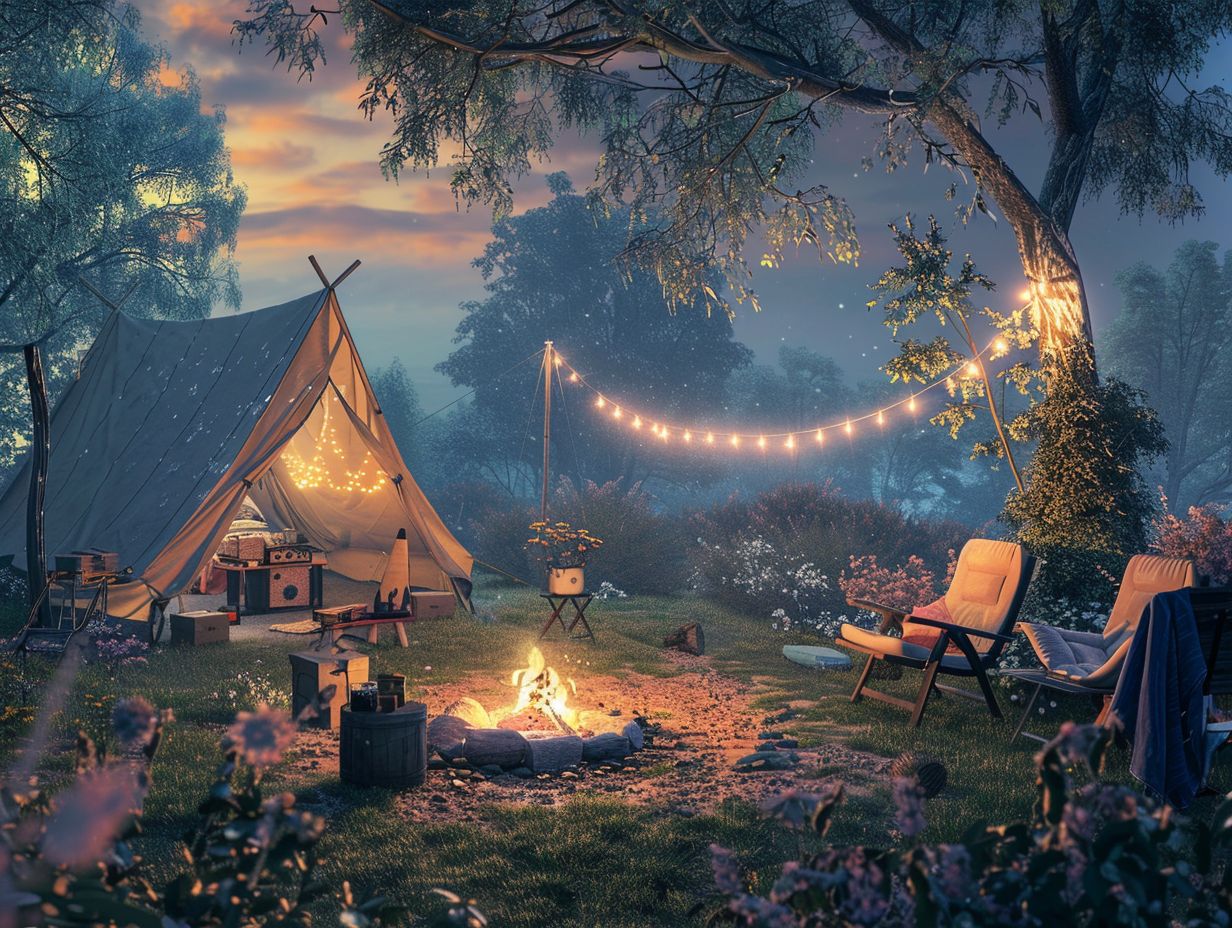
During periods of high temperatures, it is essential to maintain hydration levels by carrying a reliable water bottle and using a portable fan to ensure comfort and coolness throughout the duration of a camping trip. Remember to drink water regularly and aim for a minimum intake of eight glasses daily to prevent dehydration.
For added variety, consider flavouring your water with slices of fruits such as lemon or cucumber to give a refreshing taste. Moreover, wearing light-coloured, loose-fitting clothes made from breathable materials like cotton can improve ventilation and help regulate body temperature.
Taking breaks in shaded areas and reducing physical activity during peak sunlight hours are additional steps to avoid overheating. By integrating these simple yet effective strategies into one’s routine, individuals can prioritise their well-being and maintain coolness and hydration levels while participating in outdoor activities.
2. Cold Weather
Maintaining warmth in cold weather conditions necessitates a strategic approach that includes dressing in layers, utilising a high-quality sleeping bag, and employing a comfortable Kammok Roo Double Hammock for daytime leisure activities.
Layering clothing serves as an effective method for insulation, as it creates pockets of warmth between each layer. Commence by donning a moisture-wicking base layer to prevent sweat from accumulating on the skin.
Follow this with an insulating mid-layer constructed from materials such as fleece or down. Conclude the ensemble with a waterproof and windproof outer layer to provide protection against adverse weather conditions.
Furthermore, the selection of a premium sleeping bag featuring adequate insulation and a low-temperature rating is essential for ensuring a restful night’s sleep in cold climates.
Additionally, the inclusion of hand warmers, insulated water bottles, and hot water bottles within the sleeping bag can further enhance heat retention, thereby optimising comfort and warmth levels during nighttime rest.
3. Rainy Weather
Camping in wet weather requires the use of waterproof clothing and proper deployment of tarps and tents to ensure dryness and comfort. To improve the camping experience during stormy weather, it is advisable to acquire high-quality rain gear, including waterproof coats, trousers, and boots.
Placing a groundsheet under the tent helps to stop moisture from seeping through the tent floor. When choosing a camping spot, it is wise to select elevated areas and avoid low-lying areas or hollows that are prone to collecting water.
Securing the tent firmly with pegs and making sure all seams are sealed are additional steps to prevent water from getting in. By following these precautions, outdoor enthusiasts can enjoy their experiences even in wet weather conditions.
Personal Comfort Tips for a Camping Trip
The enhancement of personal comfort during a camping trip can be significantly improved by including items such as eye masks, earplugs, and cushions. These items help promote a peaceful night’s sleep and enhance the overall enjoyment of the camping experience.
1. Bring Comfortable Clothing
The practice of bringing comfortable clothing and dressing in layers is recommended to assist individuals in adjusting to the varying temperatures and weather conditions encountered whilst camping. This preparation is deemed essential as it facilitates flexibility in managing unforeseen weather fluctuations that are common in outdoor settings.
Opting for moisture-wicking fabrics can further contribute to maintaining dryness and comfort, particularly during activities like hiking. Ensuring the use of appropriate footwear and protective layers is vital in shielding oneself from environmental elements such as insects, sun exposure, and rugged terrain.
Although the initial investment in quality outdoor gear may appear substantial, the longevity and utility it offers can considerably enhance the camping experience.
2. Pack a Good Pillow
The inclusion of a high-quality pillow in one’s sleeping essentials can significantly improve sleeping comfort, ensuring a refreshed start to the day’s activities.
A quality pillow serves a critical role in facilitating proper alignment of the neck and spine, consequently aiding in the alleviation of aches and pains. Additionally, the appropriate pillow can assist in regulating body temperature, providing a cooling effect during summertime and warmth in winter.
The selection of an appropriate pillow has the potential to minimise restlessness during sleep, thus encouraging a deeper and more rejuvenating rest. The decision to invest in a premium-quality pillow is essentially an investment in one’s overall well-being, with the capacity to notably enhance sleep quality and overall vitality.
3. Use Insect Repellent
Utilising insect repellent is imperative to safeguard oneself from insects and enhance the comfort of camping experiences. Various types of insect repellents are available in the market, each with distinct advantages and disadvantages.
Repellents containing DEET are recognised for their efficacy against a broad spectrum of insects, including mosquitoes and ticks. Conversely, picaridin-based repellents offer a less greasy texture while still delivering effective bug protection.
Natural repellents, such as those infused with essential oils like citronella, eucalyptus, or peppermint, are increasingly favoured for their environmentally-friendly and skin-compatible attributes.
Selecting a repellent that aligns with individual requirements and the prevailing insect activity level in the camping vicinity is essential for ensuring optimal effectiveness.
4. Bring a Portable Fan or Heater

The inclusion of a portable fan or heater can effectively regulate one’s sleeping environment, ensuring comfort irrespective of the external temperature.
Portable fans and heaters present a versatile solution for maintaining a pleasant ambiance within any space. Throughout the sweltering summer season, a portable fan can deliver a refreshing breeze, aiding in the mitigation of heat and humidity. Conversely, in the cold winter months, a portable heater can swiftly elevate the temperature in one’s surroundings, guaranteeing warmth and comfort.
This utility is not confined solely to the bedroom; these devices can be easily transported to other areas such as the living room, office, or even outdoor excursions, facilitating comfort in fluctuating weather conditions.
Frequently Asked Questions
How can I make my camping trip more comfortable?
To make your camping trip more comfortable, you can do the following:
– Invest in a high-quality sleeping bag and sleeping pad for a comfortable night’s sleep
– Bring a comfortable camping chair and portable table for a comfortable seating and dining area
– Set up a shelter or canopy to protect you from the sun and rain
– Bring comfortable and appropriate clothing for the weather and activities
– Pack a comfortable pillow and blanket to make your sleeping arrangements more cosy
– Set up a comfortable and organised campsite by using storage containers and keeping your gear tidy
What type of tent should I use for a comfortable camping trip?
The type of tent you use can greatly impact the comfort level of your camping trip. Look for a tent with enough space for all your gear and an appropriate size for the number of people in your group. Consider a tent with good ventilation and a rain fly for protection from the elements. Additionally, investing in a tent with a higher denier rating and a bathtub floor can provide extra durability and comfort.
How can I stay warm and cosy during my camping trip?
Staying warm and cosy during a camping trip is essential for a comfortable experience. To do so, you can:
– Bring warm and appropriate clothing, including layers and a warm hat and gloves
– Invest in a good quality sleeping bag with a low temperature rating
– Use a sleeping pad or air mattress to insulate you from the cold ground
– Bring a portable heater or hot water bottle for extra warmth
– Build a campfire and gather around it for warmth and ambiance
What can I do to keep insects away during my camping trip?
Insects can definitely make a camping trip less comfortable. To keep them away, you can:
– Use insect repellent on your skin and clothing
– Keep your campsite clean and free of food and garbage
– Use citronella candles or lanterns to repel insects
– Wear appropriate clothing to cover exposed skin
– Consider using a screened-in tent or mosquito netting for sleeping arrangements
How can I make my meals more comfortable on a camping trip?
Mealtime can be a highlight of a camping trip, but it can also be uncomfortable if you’re not prepared. To make your meals more comfortable, you can:
– Bring a portable camping stove or grill for cooking
– Pack foods that are easy to prepare and require minimal clean-up
– Use a cooler to keep perishable foods fresh
– Bring utensils, plates, and cookware for easy dining
– Set up a comfortable outdoor dining area with a table and camping chairs
What can I do to stay clean and hygienic during my camping trip?
Staying clean and hygienic during a camping trip can significantly improve comfort and overall well-being. To do so, you can:
– Bring biodegradable soap and a small towel for washing up
– Use a solar shower or fill up a bucket with water for a makeshift shower
– Pack a hand sanitizer for quick and easy clean-ups
– Set up a portable camping toilet or use designated facilities
– Bring a small shovel for hygiene purposes, such as digging a hole for waste
Share:
By submitting your email address, you are agreeing to receive marketing emails from theexpertcamper.co.uk.
We’ll never share your email address and you can unsubscribe at any time. Privacy policy
Related Posts

A Seasonal Guide To Hiking In The Peak District
Are you ready to lace up your hiking boots and explore the stunning landscapes of the Peak District? This seasonal guide will take you through
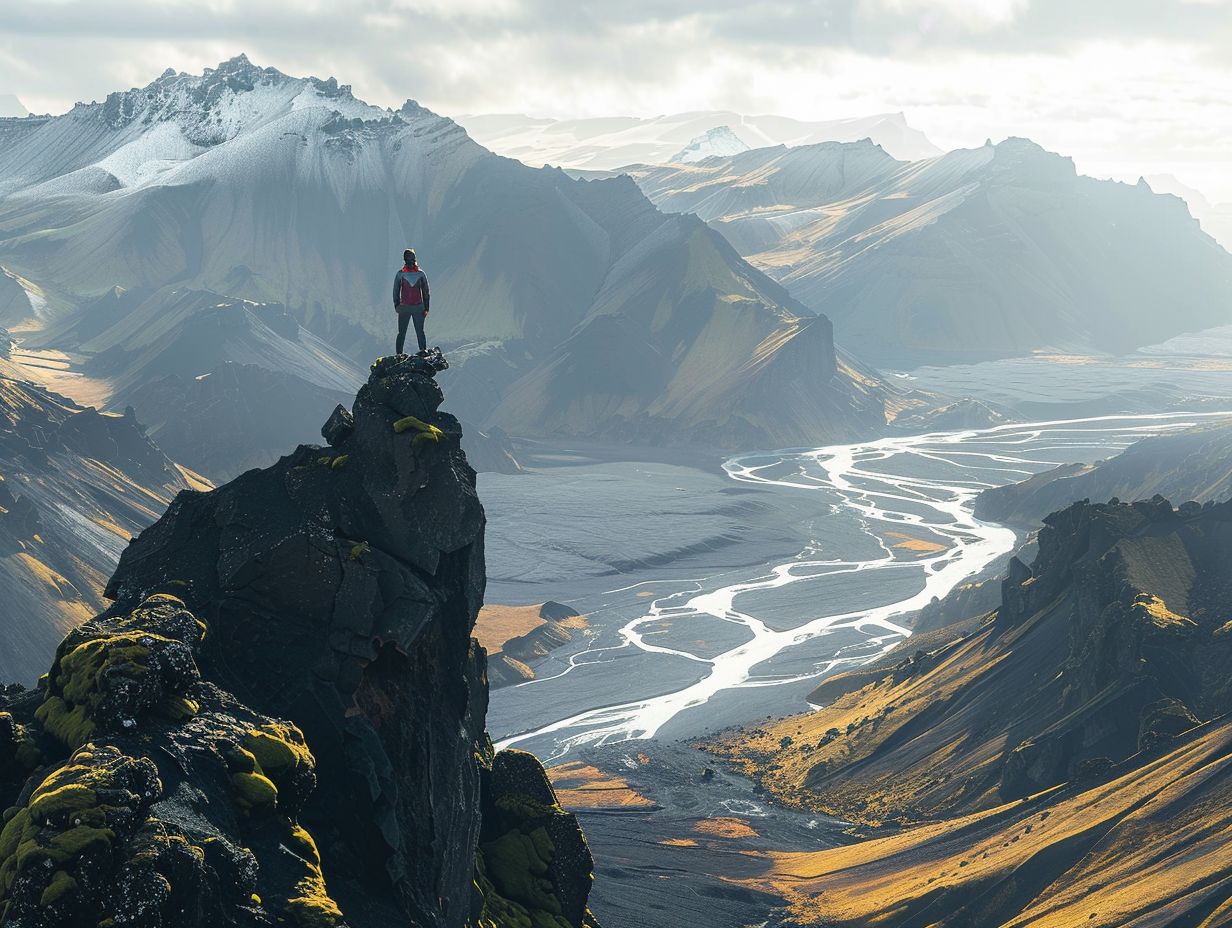
Hiking Challenges Preparing For Your First Ultrahike
Are you ready to take your hiking adventures to the next level? Ultra-hiking offers a unique combination of physical and mental challenges, breathtaking scenery, and
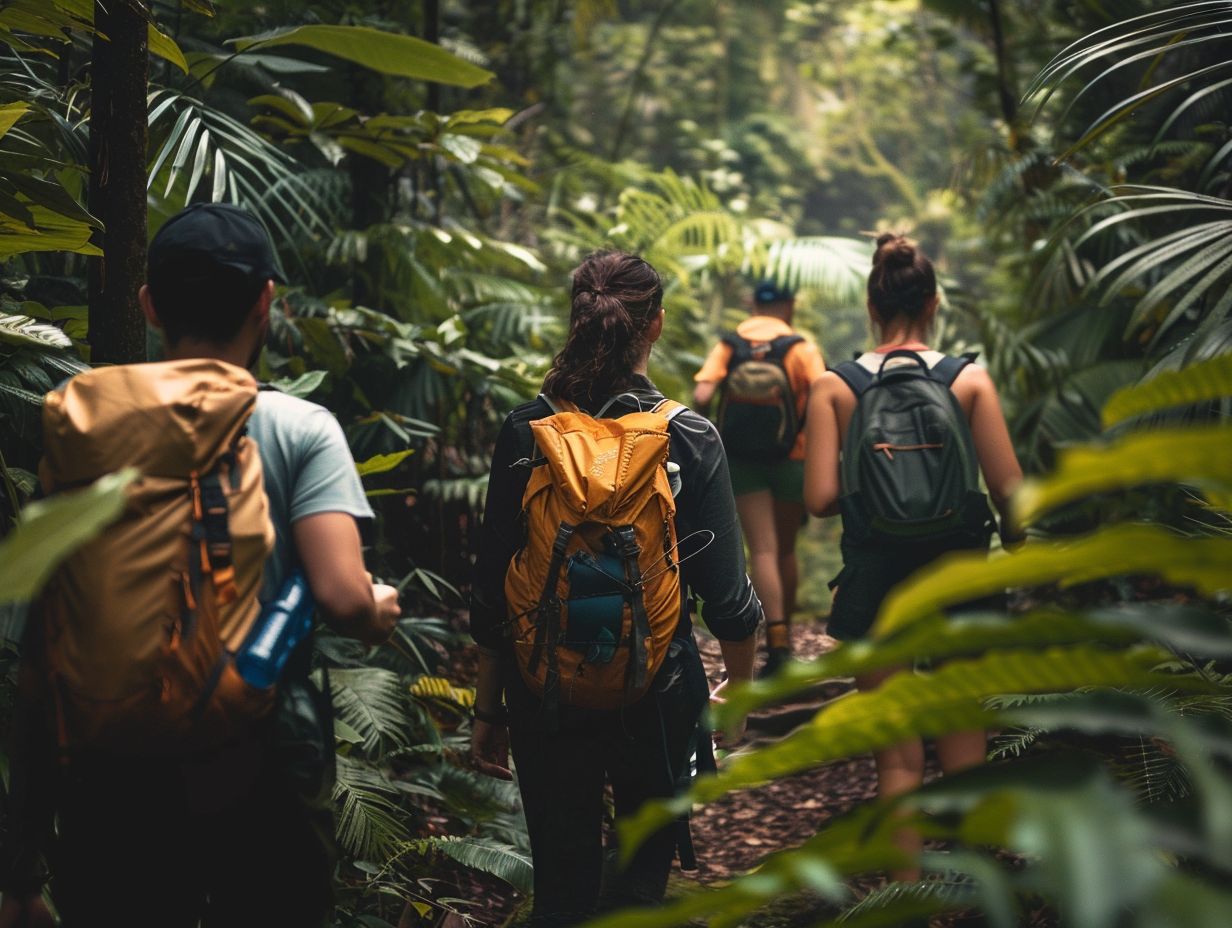
Ecofriendly Hiking Tips For Sustainable Adventures
Are you an outdoor enthusiast looking to minimise your impact on the environment while enjoying the great outdoors? Eco-friendly hiking is the perfect solution! We
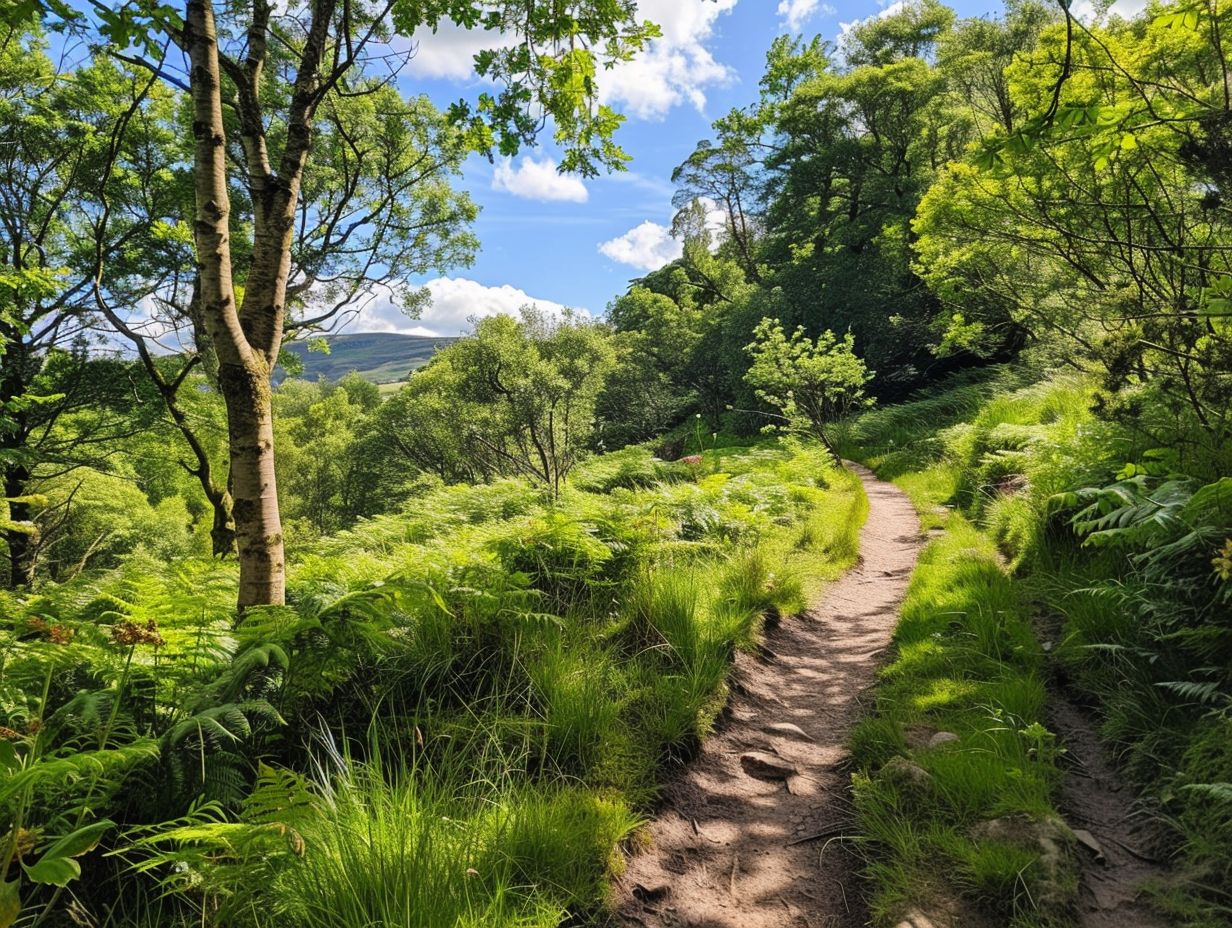
The Best Hiking Trails For Experiencing UK Wildlife
When exploring the picturesque hiking trails of the UK, you can expect to encounter a diverse array of wildlife. From majestic birds soaring overhead to

Wildflower Walks The Best Trails For Nature Lovers
Are you a nature lover looking to embark on a wildflower walk? Explore the best trails for wildflower walks, including [Trail Name 1], [Trail Name


